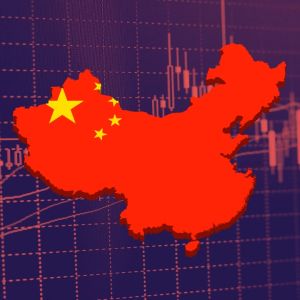China’s central bank genuinely believes that the yuan is holding the world’s financial system together. On Sunday, People’s Bank of China (PBOC) Governor Pan Gongsheng told global leaders at the AlUla Conference for Emerging Market Economies in Saudi Arabia that while other currencies are crumbling against the rising U.S. dollar, the yuan has stayed steady. “Recently, a number of factors have pushed up (the) dollar index, and non-dollar currencies have mostly depreciated. But RMB (yuan) has remained largely stable despite the high market volatility,” Pan said at the event, which was organized by the International Monetary Fund (IMF) and Saudi Arabia’s Finance Ministry. China pushes domestic spending over investment Pan said China is moving away from relying on massive infrastructure projects to drive growth and instead focusing on domestic consumption. The government is raising household incomes, offering subsidies, and rolling out pro-consumption policies to keep the economy moving. China has made 2025 the year of consumption growth. The goal is simple: get people to spend more money instead of relying on exports and investment-heavy growth. Pan said China’s price growth and consumer demand could be stronger, but he’s confident that the economy is on solid ground, with risks from local government debt and the real estate sector shrinking. Monetary policy is also changing a bit. Pan said that China will use proactive fiscal policies and accommodative monetary measures, with an emphasis on counter-cyclical adjustments to keep financial markets stable. China is facing headwinds, though. “Rising trade protectionism, geopolitical tensions, and the fragmentation of the global economy” are challenges Beijing cannot ignore, Pan said. Still, he stressed that China is committed to keeping its markets open and pushing forward with economic reforms. Asian central banks take on the dollar with currency forwards China isn’t the only country fighting back against the dollar’s strength. Across Asia, central banks are turning to derivatives to defend their currencies, using a strategy that raises concerns about how long they can sustain these interventions. India’s central bank has ramped up its use of currency forwards, pushing its net dollar short forward position to a record $68 billion in December. Indonesia has also piled on risk, with its short forward book hitting $19.6 billion, the highest level since at least 2015. On January 20, when Trump officially returned to office, a White House fact sheet outlined his plan to crack down on currency manipulation. The very next day, U.S. Treasury has labeled countries as currency manipulators before, and Trump previously put China in that category. Malaysia is also in the game, with its forward book reaching $27.5 billion by November, after swelling by $4 billion in 2024. The Philippines, on the other hand, has taken a more cautious approach, cutting its net long forward position down to just $874 million, according to IMF data. Asian central banks are also up against U.S. President Donald Trump’s aggressive trade strategies, which are mostly just tariffs and threats of tariffs. Last week, Trump made it clear that he doesn’t like foreign governments intervening in currency markets when he said via a post on Truth Social that: “I have decided, for purposes of Fairness, that I will charge a RECIPROCAL Tariff meaning, whatever Countries charge the United States of America, we will charge them – No more, no less! For purposes of this United States Policy, we will consider Countries that use the VAT System, which is far more punitive than a Tariff, to be similar to that of a Tariff.” Currency forwards give central banks an edge. Unlike direct interventions, these derivatives don’t drain foreign exchange reserves and don’t attract as much attention from Washington. That makes them an attractive tool for countries trying to stabilize their currencies without landing on Trump’s radar. The dollar has recently taken a hit, giving central banks some breathing room. Trump has delayed or canceled tariffs on Canada, Colombia, and Mexico, raising doubts about whether he will follow through on his biggest trade threats. A broad dollar index has slipped 1.8% this year, showing signs of softening. India’s Reserve Bank (RBI) Governor Sanjay Malhotra is also making changes. The RBI has scaled back its non-deliverable forward market bets, opting instead to conduct onshore interventions to improve domestic liquidity. While this is great, JPMorgan analysts believe currency forwards will remain a go-to tool for central banks for the foreseeable future, according to a note they sent their clients on Friday. Cryptopolitan Academy: How to Write a Web3 Resume That Lands Interviews - FREE Cheat Sheet












